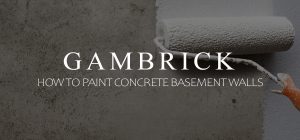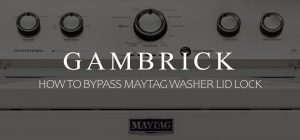
Is Concrete A Good Insulator?
No, concrete is not a very good insulator. However, it’s still an insulator, doesn’t conduct electricity well, and provides some R-value. The average mixture of concrete only has an r-value of between 0.1 to 0.2 per inch of thickness. This means an average 12 inch thick concrete wall only has an R-value of between 1.2 and 2.4. Compare that with the average 2×6 wood framed wall with R-29 insulation. Floors aren’t any better. A 6 inch slab has an R-value between .06 and 1.2. Wood framed floors are thicker than walls and generally have an R-value between R-30 and R-38. The R-value of concrete varies depending on how dense the concrete mixture is. In general, low-density concrete has a higher R-value than high-density concrete. This is bad for residential construction because we typically use high density concrete to build a foundation.
To fix the extremely low R-value, builders insulate concrete walls, floors, and ceilings. Rigid foam can be installed on the outside and inside of concrete walls to significantly raise their R-values. Insulated Concrete Forms (ICF), are forms made from foam insulation that are stacked like Lego blocks. Once in place, they’re filled solid with concrete. Once the concrete hardens, the forms are left in place which creates a very well insulated wall.
Sheets of rigid foam can be installed below concrete slabs and along footings to add even more insulation.
Although concrete does not have a high R-value, it’s an excellent air barrier. There’s no way air is getting through a solid concrete wall. This means you won’t have heat loss caused by drafts. This is a very good property as long as you add R-value to your concrete with foam insulation.
Concrete And Heat Loss
The insulating ability of a material is indicated with a number called an R-value. The higher the R-value, the more insulation it has. Insulation is the resistance a material has to the transfer of heat from one side to the other. So the higher the R-value the more resistance a material has to heat transferring, or passing, through it. This helps understand how heat loss works.
Heat loss is the measure of how much heat is lost from inside a home to outside or vice versa. Let’s say it’s 40 degrees outside and you set the thermostat to 70. If the home is poorly insulated, it may only take 15-30 minutes before the temperature inside falls down to 40. But if the house is well insulated, it could take hours. Passive House, one of the most well insulated homes you can build, may stay at 70 for an entire day because of how well insulated and tightly sealed it is.
Although concrete is not a very good insulator, heat loss won’t occur because of drafts. Air is not going to pass through a solid concrete wall. This is a huge advantage because drafts are a major cause of heat loss. If you insulate concrete walls and slabs with rigid foam, they generally have less heat loss than wood framing does. This is because there are no cracks for air to pass through.
Sealing around windows and doors is very important. This is a vulnerable area for concrete and a spot where heat loss can occur.
Slab insulation is very important too. The ground under the slab will be colder than the inside so heat will be drawn to it. Make sure you insulate the slab so heat stays inside the room where you want it.
Covering Concrete Provides Insulation
If you plan on covering your concrete walls and floors, remember that those materials add R-value and cut down on heat loss too.
In general, flooring and wall materials provide better insulation than concrete.
- 3/4 Inch hardwood flooring has an R-value of about 0.7,
- Carpet laid over a fiber based padding has an R-value of around 2.
- Tile has an R-value similar to concrete and doesn’t provide much additional insulation.
- 1/2 Inch drywall has an R-value of around .05.
- Wood walls offer about a 1.4 R-value per inch.
- Cork is a great insulator offering R3.6 to R-4.2 per inch. Here in the US we typically use it as a flooring but in Europe Cork is used as an insulating siding material that can be installed on either side of a concrete wall.
In general, wall and floor coverings don’t provide a ton of additional insulation, but every bit counts. Especially since concrete is such a naturally poor insulator.
Make sure to properly seal around all your windows, doors and vents. That’s where most drafts occur in a concrete home because air will not pass through concrete.
Insulating A Concrete Floor
You should almost always insulate under a concrete slab floor and install a vapor barrier. Especially if the floor is living space and not a basement. If you don’t you’ll have very cold floors and heat loss.
The highest potential for heat loss in a concrete slab is through the edges that are in direct contact with the air at the exterior of the building. Less heat loss occurs through the surface of the slab that’s in contact with the ground. Therefore, it’s important to insulate not only under the slab, but also along the sides if they touch the air. And don’t forget to insulate around the footings too.
Lay a plastic vapor barrier under the slab along with rigid foam insulation. Insulate under the slab, around the edges and around the footings. Seal the seams where foam boards touche with spray foam or a caulk sealant.
The insulation boards should continue up the walls of the room to the top of the footing and at least to the frost depth. Although I recommend insulating an entire concrete wall anywhere it touches fresh air.
Is Concrete A Conductor Or Insulator Of Heat?
Concrete is a much better conductor of heat and is not an insulator. Concrete alone offers almost no insulation (R-value). When working with concrete, it’s very important to use rigid foam if you want some insulation from your concrete walls and floors. Otherwise you’ll essentially get none. Although concrete is an excellent air barrier which is a form of insulation.
Concrete is great at storing and conducting heat. If you’ve ever walked on a hot concrete patio in Summer you’ll know what I mean. Concrete floors will soak up sun heat and stay warm for hours. They’re great when paired with large insulated windows or radiant heat.
Many super insulated homes, like Passive House, will strategically place large windows over concrete walls and floors to soak up heat and warm the house. This works even at night because it takes a long time for concrete to completely lose all it’s stored heat.
Concrete feels great with radiant heat. Hot water tubes run through the slab deliver heat to the surface. Concrete is such a great conductor of heat that radiant hot water tubs can not only heat the floors but also the entire home. provided you have enough insulation on the walls, floors and ceiling to keep that heat in. This is where an understanding of heat loss is important.
Is Concrete An Insulting Material?
No, on it’s own, concrete is not a good insulating material. It only has an R-value of between .1 and .2 per inch. That’s practically nothing and probably not even noticeable. Even a foot of solid concrete only has an R-value of between 1.2 and 2.4. Consider that 12 inches of insulation is around an R-38. That’s over 15 times as much.
Concrete is an excellent air barrier which is a form of insulation. Air will not pass through a solid concrete wall. So if what you need is insulation against drafts, concrete is one of the best.
There are other forms of insulation. If you’re looking for sound insulation, solid concrete is very good. Sound waves bounce right off concrete walls.
Concrete is also a pretty good insulator against electricity and is considered a poor conductor. But that’s when it’s dry. Wet concrete is different because electricity can travel through moisture much easier.
Is Concrete Block A Good Insulator?
No, concrete block is not a good insulator. It doesn’t matter if the walls are poured solid or built out of concrete block, they still only have an R-value of .1 to .2 per inch. The average concrete block to build a home is either 8 inch or 12 inch. So that’s only an R-value of .8 to 1.6 for an 8 inch block or 1.2 to 2.4 for a 12 inch block. And that’s assuming the cells are filled solid with concrete. If the cells are left hollow, you’ll have even less insulation.
Rigid foam insulation can be added to block in exactly the same way as solid concrete walls. This adds a lot of insulation. In general rigid foam provides an R-value of around 6.2 per inch.
Concrete block cracks much easier than solid concrete because of all the cement joints holding the block together. For this reason, block isn’t always as good an air barrier as solid concrete walls. That same is true as an insulating sound barrier. If the walls has cracked joints, air and sound can pass through much easier.
Summary: Is Concrete A Good Insulator?
Is concrete a good insulator? No, concrete is not a very good insulator. The average mixture of concrete only has an r-value of between 0.1 to 0.2 per inch of thickness. This means an average 12 inch thick concrete wall only has an R-value of between 1.2 and 2.4. Compare that with the average 2×6 wood framed wall with R-29 insulation. Floors aren’t any better. A 6 inch slab has an R-value between .06 and 1.2. Wood framed floors are thicker than walls and generally have an R-value between R-30 and R-38. The R-value of concrete varies depending on how dense the concrete mixture is. In general, low-density concrete has a higher R-value than high-density concrete. This is bad for residential construction because we typically use high density concrete to build a foundation.
To fix concrete’s extremely low R-value, builders add insulation. Rigid foam can be installed on the outside and inside of concrete walls to significantly raise their R-values. Insulated Concrete Forms (ICF), are forms made from foam insulation that are stacked like Lego blocks. Once in place, they’re filled solid with concrete. Once the concrete hardens, the forms are left in place which creates a very well insulated wall.
Sheets of rigid foam can be installed below concrete slabs and along footings to add even more insulation.
Although concrete does not have a high R-value, it’s an excellent air barrier. There’s no way air is getting through a solid concrete wall. This means you won’t have heat loss caused by drafts. This is a very good property as long as you add R-value to your concrete with foam insulation.
If you have any questions or comments about concrete, email any time.

John Mazzuca | About | More Posts |
Custom Home Builder
John Mazzuca is a custom home designer and builder at Gambrick with over 25 years experience in the construction industry. John has designed, built and/or remodeled hundreds of homes, small buildings, and commercial projects. He writes about business, real estate, home building, and household electronics. His work has been featured in Fox Business, Better Homes & Garden, House Beautiful, and more.




















